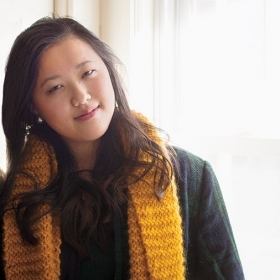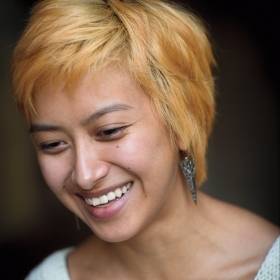My friend Robbin Chapman, associate provost and academic director of diversity and inclusion, tells the story of the day she started at the College, when she first experienced the Wellesley phenomenon named Irma Tryon. “She was walking along the third floor of Green Hall and greeted me with that dazzling smile and grabbed me up in that big hug,” Robbin says. For someone just arriving from a large engineering school where one didn’t hug, it was a bit of a shock. Yet Robbin says it was the first moment when she felt that she truly belonged at Wellesley.
Raise your hand if you know Irma Tryon. Raise your hand if she coached you through writing your résumé, or helped you frame your career dreams. Raise your hand if her empathetic counsel as Latina advisor helped you navigate Wellesley. Raise your hand if she called you “sweetie,” or flashed her brilliant smile at you, or wrapped you in a hug.
My guess is that many of you who have graduated since 1978 have your hands in the air. Me, too.
After 37 years running Wellesley’s recruiting program, providing career counseling for generations of students and alumnae, and serving as cultural advisor to Latina students for a period, Irma retired last fall. Green Hall is a lot quieter without her. We miss her.
“The lines and wait times were always longest for Irma,” says Joanne Murray ’81, former head of the Center for Work and Service (CWS). “She sat a student down and listened and listened and loved her and laughed with her. For Irma, the way to success was through demonstrating that that student, the one in front of her, was the most important, and she was going to throw 100 percent of her talent, resources, and care into launching her into the world.”
Irma, without fail, was tuned into issues of diversity and inclusion. It was Irma who pointed out that not all students had the suits needed for job interviews, who started CWS’s suit loaner programs—with suits from size 2 to 22. It was Irma who thought to purchase suits for transgender students. She launched CWS’s cultural liaison program—aimed at meeting the needs of cultural and special-interest groups on campus with specific resources. She planned career panels with alumnae of color and brought students together with pizza and laughter.
In other words, Irma’s embrace was not limited to the (admittedly large) group of people she gave actual hugs to. She drew a whole lot of people in. She also would dive in whenever she encountered injustice, as Robbin Chapman noted at Irma’s recent retirement party. There was no sitting still with Irma.
It’s an example worth remembering in this tumultuous period of terror attacks and amped-up, exclusionary campaign rhetoric. (For more on U.S. presidential politics, see “Campaign 2016: A Teach-In.”) It’s a way of operating to keep in mind as Wellesley students, like students around the country, protest and voice their concerns about issues of race and equality—including incidents at the College that have made them feel excluded or marginalized (see “Marching for Change.”). And it’s something to ponder as the College works to answer the longstanding student call for multicultural space (“College Augments Multicultural Space.”).
As I write this in early winter, Irma is off on a prolonged trip to California and Hawaii to snuggle up with her grandchildren. Even as she steps away from campus, I hope we will keep a large portion of her generous spirit with us.






We ask that those who engage in Wellesley magazine's online community act with honesty, integrity, and respect. (Remember the honor code, alums?) We reserve the right to remove comments by impersonators or comments that are not civil and relevant to the subject at hand. By posting here, you are permitting Wellesley magazine to edit and republish your comment in all media. Please remember that all posts are public.